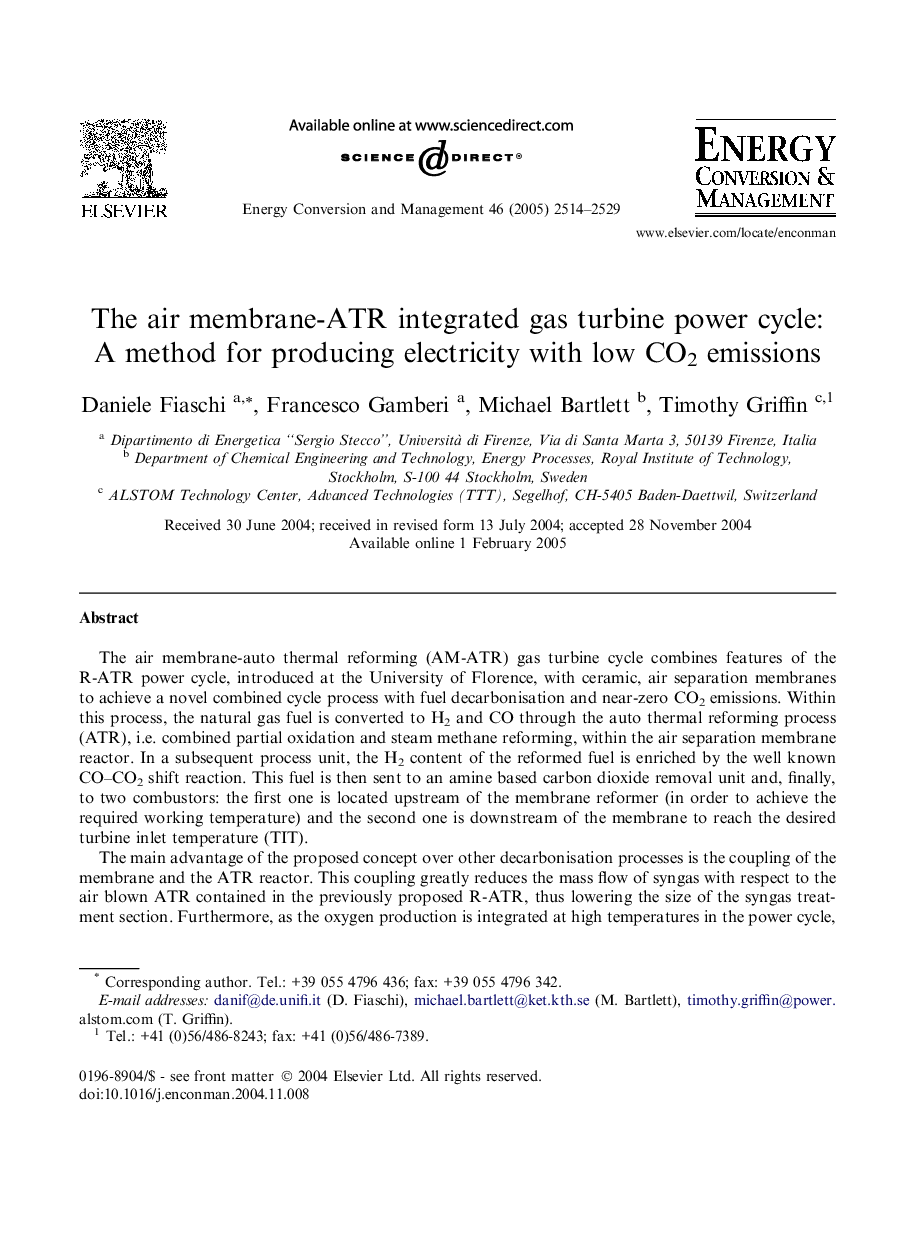| کد مقاله | کد نشریه | سال انتشار | مقاله انگلیسی | نسخه تمام متن |
|---|---|---|---|---|
| 762739 | 1462917 | 2005 | 16 صفحه PDF | دانلود رایگان |

The air membrane-auto thermal reforming (AM-ATR) gas turbine cycle combines features of the R-ATR power cycle, introduced at the University of Florence, with ceramic, air separation membranes to achieve a novel combined cycle process with fuel decarbonisation and near-zero CO2 emissions. Within this process, the natural gas fuel is converted to H2 and CO through the auto thermal reforming process (ATR), i.e. combined partial oxidation and steam methane reforming, within the air separation membrane reactor. In a subsequent process unit, the H2 content of the reformed fuel is enriched by the well known CO–CO2 shift reaction. This fuel is then sent to an amine based carbon dioxide removal unit and, finally, to two combustors: the first one is located upstream of the membrane reformer (in order to achieve the required working temperature) and the second one is downstream of the membrane to reach the desired turbine inlet temperature (TIT).The main advantage of the proposed concept over other decarbonisation processes is the coupling of the membrane and the ATR reactor. This coupling greatly reduces the mass flow of syngas with respect to the air blown ATR contained in the previously proposed R-ATR, thus lowering the size of the syngas treatment section. Furthermore, as the oxygen production is integrated at high temperatures in the power cycle, the efficiency penalty of producing oxygen is much smaller than for the traditional cryogenic oxygen separation. The main advantages over other integrated GT-membrane concepts are the lower membrane operating temperature, lower levels of required air separation at high partial pressure driving forces (leading to lower membrane surface areas) and the possibility to achieve a higher TIT with top firing without increasing CO2 emissions. When compared to power plants with tail end CO2 separation, the CO2 removal process treats a gas at pressure and with a significantly higher CO2 concentration than that of gas turbine exhausts, which allows a compact carbon dioxide removal unit with a lower energy penalty.Starting from the same basis, various configurations were considered and optimised, all of which targeted a 65 MW power output combined cycle. The efficiency level achieved is around 45% (including recompression of the separated CO2), which is roughly 10% less than the reference GT-CC plant (without CO2 removal). A significant part of the efficiency penalty (4.3–5.6% points) is due to the fuel reforming, whereas further penalties come from the recompression units, loss of working fluid through the expander and the steam extracted for the ATR reactor and CO2 separation. The specific CO2 emissions of the MCM-ATR are about 120 kg CO2/kWh, representing 30% of the emissions without CO2 removal. This may be reduced to 10–15% with a better design of the shift reactors and the CO2 removal unit. Compared to other concepts with air membrane technology, such as the AZEP concept, the efficiency loss is much greater when used for fuel de-carbonisation than for previous integration options.
Journal: Energy Conversion and Management - Volume 46, Issues 15–16, September 2005, Pages 2514–2529